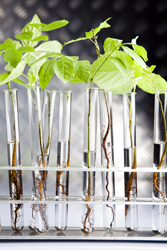Understanding disease resistance in plant cross-breeding
Although hybrid vigour has much to offer agriculture, there is still great untapped potential as long as incompatibility is not better understood. The failure of many plant crosses limits the applications it can be used for. The 'Analysis of Arabidopsis hybrid incompatibilities' (Arabidopsis hybrids) project set out to make it possible to introduce the widest possible range of valuable features into crops. The EU-funded project consisted of two sub-projects and worked to understand the molecular and biochemical basis of hybrid incompatibility within as well as between species. The first step was to characterise an incompatibility that was identified, where offspring develop ectopic outgrowths on leaf petioles. The model used was a cross between two Arabidopsis thaliana strains from Spain and Tajikistan. Initial results suggested that this example of severe negative epistasis is due to an interaction between two alleles of a disease resistance (R) protein. The project sought to characterise the interaction at the protein level by domain-swapping and mutagenesis, unravelling the mechanisms behind the adverse interaction. The second sub-project focused on the effects of intra- and inter-specific hybrid formation on genomic regulation through RNA silencing. Hybrids in the Arabidopsis genus were to be used. The assumption is that changes in small RNA populations in hybrids contribute to a misregulation of genes, which results in hybrid incompatibility. However, bioinformatic analysis of the data has proven to be challenging as the study involves genomes that have not been fully sequenced. Data has been shared with other relevant research groups in order to offer maximum benefit from this project's achievements.







